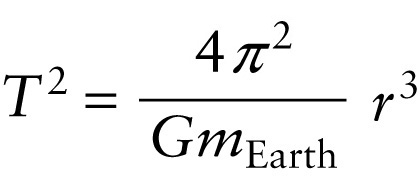Relationship between orbital period and radius for a circular orbit (10-12)
Question 1 of 4
Question
Mass of Earth
{"title":"Period of an Earth satellite in a circular orbit","description":"Incorrect","type":"incorrect","color":"#99CCFF","code":"[{\"shape\":\"poly\",\"coords\":\"82,133\"},{\"shape\":\"rect\",\"coords\":\"1,48,28,82\"}]"} {"title":"Radius of the satellite's orbit","description":"Wrong","type":"incorrect","color":"#ffcc00","code":"[{\"shape\":\"rect\",\"coords\":\"118,11,119,13\"},{\"shape\":\"rect\",\"coords\":\"264,59,285,90\"}]"} {"title":"Mass of Earth","description":"Correct!","type":"correct","color":"#333300","code":"[{\"shape\":\"poly\",\"coords\":\"113,132\"},{\"shape\":\"rect\",\"coords\":\"195,33,199,34\"},{\"shape\":\"rect\",\"coords\":\"139,91,177,115\"}]"} {"title":"Gravitational constant","description":"Incorrect","type":"incorrect","color":"#000080","code":"[{\"shape\":\"rect\",\"coords\":\"109,82,136,112\"}]"}Review
Another useful way to describe how rapidly a satellite moves around its circular orbit is in terms of the orbital period, which is the time required to complete one orbit. In uniform circular motion the speed v is constant, so the orbital period T is just the circumference 2πr of the orbit (the distance around the circular orbit of radius r) divided by the speed: T=2πr/v. Using Equation 10-11 for v, this becomes
T=2πrv=2πr√rGmEarth
It's convenient to square both sides of this equation so as to eliminate the square root. Note that the square of r is r2 and the square of √r is r, so we end up with a factor of r2×r=r3 on the right-hand side of the equation:

